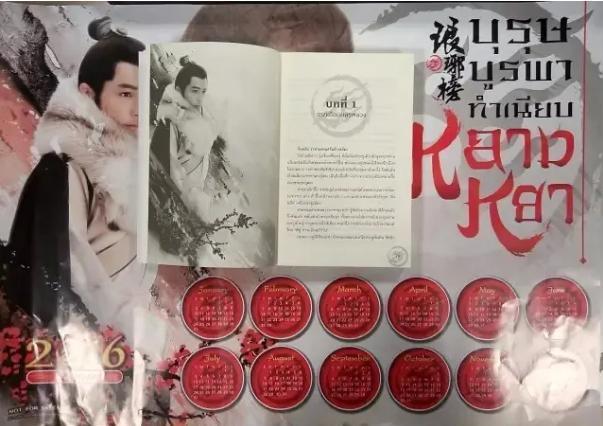
In recent years, an increasing number of Chinese TV dramas have gained immense popularity among Vietnamese viewers. Many Vietnamese people can effortlessly mention several Chinese TV dramas or characters.
The close geographical proximity and cultural similarities between China and Vietnam provide a natural advantage for cultural exchanges. The popularity of Chinese TV dramas in Vietnam has also contributed to the growth of Vietnamese teams for subtitle translation and sparked a wave of enthusiasm for learning Mandarin among young Vietnamese individuals.
As early as 1992, a 50-episode Chinese TV series called "Ke Wang" (Expectation) began airing on the Vietnamese National Television. This marked the beginning of the spread of Chinese TV dramas in Vietnam. Astonishingly, this drama achieved an incredible viewership rating of 90.78% in Vietnam.
The success of "Ke Wang" paved the way for subsequent Chinese TV dramas such as "Yongzheng Dynasty","Legend of Liu Yong","The Song Sisters","Princess Returning Pearl", and"Journey to the West" to land in Vietnam. Similar to their Chinese counterparts, Vietnamese children also enjoy watching the TV series"Journey to the West" during the long summer vacation. Promotional posters and photos of"Princess Returning Pearl" once could be seen throughout the streets and alleys of Vietnam.

Between 2000 and 2006, over 300 Chinese TV dramas were broadcast on the national television channels in Vietnam, accounting for approximately 40% of the total imported dramas.
In 2018, "Story of Yanxi Palace" created a viewing frenzy in Vietnam, rivaling the popularity it enjoyed in China. Many Vietnamese tourists visiting China make it a point to visit the Yanxi Palace in Beijing, as well as the filming location of the popular drama in Hengdian World Studios, Zhejiang Province.

According to the research report "User Profile of Chinese TV Dramas on YouTube", Chinese TV dramas in Asia are primarily concentrated in countries such as Vietnam, Indonesia, and the Philippines. Among foreign audiences, Vietnamese viewers are the most avid consumers of Chinese TV dramas. Among the 85 dramas with an average view count exceeding one million per episode on the YouTube platform (including Chinese-language dramas), 44 of them are translated into Vietnamese, accounting for 51.76% and making it the largest foreign language category. Among the nine dramas with only one translated version and view count exceeding four million, eight of them are dubbed in Vietnamese, accounting for a staggering 88.89%.

On the YouTube platform, among the top 10 dramas with the highest view counts among the 570 dramas, nine are licensed for operation in Vietnam, with Vietnamese dubbing and subtitles. The tenth-ranked drama, "Nirvana in Fire", is open for global distribution. Its Vietnamese dubbing highlights the importance attached to the Vietnamese market.
A 45-minute episode is usually divided into three parts, with each translator responsible for 15 minutes, according to a translator, whose subtitle team also translates subtitles for English dramas, Japanese dramas, and Korean dramas. But in terms of click rates, Chinese TV dramas are the most popular. Among various genres, romantic dramas, inspiring youth dramas, and modern dramas are the most favored.
According to a previous report by Singapore's Lianhe Zaobao website, the popularity of Chinese dramas has also fueled the interest of Vietnamese people in learning Mandarin. Yan Cuizhuang, who operates two Mandarin learning centers in Hanoi, mentioned that her new center near three universities attracts around 30 new students per month.
In addition to attracting young people online, Chinese films are also being broadcast on Vietnamese TV channels, further spreading the charm of Chinese culture.
Source:CCTV News, Xinhua News Agency, People's Daily,China Plus, Yangtse Evening Post, The Paper, Reference News
中国电视剧有多受越南观众喜爱?
近些年,越来越多的中国电视剧在越南热播,很多越南人都能随口说出几部中国电视剧或剧中人物。
中越两国山水相连、文化相近,彼此人文交流存在天然的便利条件。中国电视剧在越南热播,也带动了越南字幕翻译小组的发展,还在越南年轻人圈子中掀起了汉语学习热。
早在1992年,50集中国电视连续剧《渴望》就开始在越南国家电视台播出。这是中国电视剧在越南传播的开端。这部电视剧在越南的收视率居然达到不可思议的90.78%。
《渴望》的成功,使得中国电视剧如《雍正王朝》《宰相刘罗锅》《宋氏三姐妹》《上海一家人》《还珠格格》《西游记》等先后登陆越南。
与中国小朋友一样,越南儿童在漫长的暑假期间也流行观看电视连续剧《西游记》。一时间,越南大街小巷甚至还可以看到《还珠格格》的宣传画报和照片。
在2000年至2006年间,越南全国电视台累计播出中国电视剧300多部,一度占到引进剧总量的40%。
2018年,《延禧攻略》在越南掀起了比国内毫不逊色的收视热潮。很多越南游客来中国也要去看北京的延禧宫,以及《延禧攻略》的影视拍摄地横店。
从调研报告《中国电视剧YouTube平台用户画像》来看,在亚洲地区中国电视剧主要集中在越南、印尼、菲律宾等国家,其中越南观众是最喜欢观看中国剧集的外国观众。在YouTube平台每集平均播放量超过100万次的85部剧集中(含纯中文剧集),44部被译为越南语,占比达到51.76%,为第一大国别语言。在单集播放量超过400万次的9部只进行一种语言译配的剧集中,其中8部为越南语配音,占比高达88.89%。
在YouTube平台,在570部剧中观看量排名前10的剧集,9部剧集均为面向越南地区开放版权运营,并进行越南语配音和添加字幕;排名第十的剧集《琅琊榜》,面向全球开放版权,但也进行了越南语配音,足见对越南市场的重视。
据翻译员辛氏玉英介绍,一集45分钟的戏通常分成三部分,一个翻译员负责翻译15分钟。她的字幕组也为英语剧、日剧和韩剧翻译字幕,但论点击率,还是中国电视剧最吃香;各类题材中以言情剧、青年励志剧和现代剧最受欢迎。
据新加坡《联合早报》网站此前报道,中国剧热播也带动了越南人学习汉语的兴趣。在河内经营两家汉语学习中心的严翠庄说,她在三所大学附近开设的新中心,一个月可以吸引30名新学生。
除了中国电视剧在网上吸引年轻人,中国电影也在越南电视频道热播,进一步传播华流文化的魅力。
(参考资料:央视新闻、新华社、人民日报、国际在线、扬子晚报、澎湃新闻、参考消息网等)
话题主持 | 记者 郑宗敏
翻译|陈萱
责编 | 王瑜瑛
校对 | 苏敏
-
Photos | Skilled professionals in Guangzhou's Liwan district showcase talent
2023-12-13 22:30:37 -
Changes in international flights at Baiyun Airport starting Dec 13th
2023-12-12 23:05:04 -
Guangdong to release 300 million yuan in vouchers
2023-12-12 22:58:29 -
Guangzhou Lanpu Park receives praise from Metropolis
2023-12-12 22:58:28






